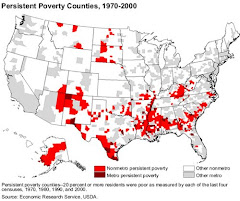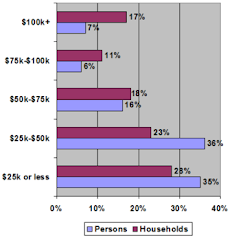Campaigns are starting across the country to raise wages so that people who do work can sustain their families. Living wages is a political hot potato because many businesses oppose being forced to raise the wages of their workers (since they don't want their costs to increase) and these same businesses have strong ties with politicians.
But as Madeline Janis-Aparicio, an individual leading campaigns to pay a living wage in Los Angeles points out, imagine what people's lives are like who are making $5.15 an hour. They can't buy food. They can't pay rent. They can't pay their electric bills. They have to live part of the times...in their cars.
The Podcast link on Living Wages (click on the link on the right of this page) talks about various efforts to induce companies to pay a living wage. Minimum wages could become Living Wages if businesses were to just raise prices by 1 percent and pass this benefit to their workers.
Source: Goodman, Amy, "Perspectives on a Living Wage." 25 Aug. 2006, http://www.pbs.org/pov/pov2006/wagingaliving/special_goodman_la.html.






